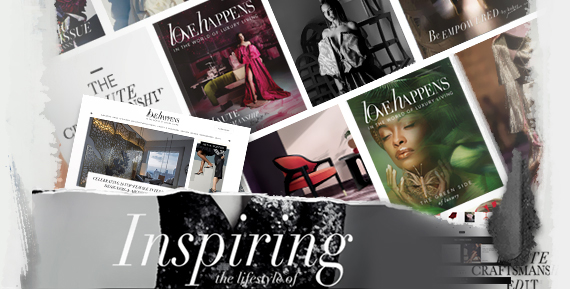6 Jewelers Who Still Make Buying Fine Jewelry Feel Personal (2025 Review)

Somewhere between the glitter of display lights and the hum of online shopping, jewelry lost a bit of its magic. The transaction replaced the tradition; speed replaced story. But a few jewelers still do things differently—blending old-world craftsmanship with modern accessibility and a genuine sense of care.
In 2025, these are the brands keeping jewelry personal. From century-old family houses to boutique innovators redefining trust, here’s who’s still doing it right, and why it matters when you’re buying something meant to last a lifetime.
1. Rogers & Hollands | Ashcroft & Oak
What sets Rogers & Hollands | Ashcroft & Oak apart isn’t just its 115-year history—it’s the way that history still shows up in every experience. Founded in 1910, this family-owned jeweler has managed to hold onto its heart while growing into the largest family-run jewelry chain in America. Whether you visit a Rogers & Hollands store in the Midwest or an Ashcroft & Oak elsewhere, the experience feels personal, almost generational.
Their signature lifetime protection plan says it all: free resizing, cleaning, inspections, and repairs for the life of your jewelry. That promise speaks to a mindset that sees every piece as an heirloom, not an item. Add a wide range of styles, from accessible gifts to investment-level diamonds, and you’ve got a brand that feels both timeless and modern.
Pros
- 115+ years of family heritage and multi-generational expertise.
- Lifetime protection that covers cleaning, resizing, and repairs.
- Personalized in-store guidance for every milestone purchase.
- 70+ locations nationwide with a consistent boutique feel.
- Diverse collection suited for every price point and occasion.
Cons
- Custom work can take longer due to in-house craftsmanship standards.
- Seasonal demand can make appointments necessary for detailed consultations.
- Ultra-high-end collector stones may require sourcing requests.
- Slight experience variation between store regions.
Rogers & Hollands | Ashcroft & Oak remains the definition of what “family-owned” should mean in modern luxury — dependable, transparent, and deeply personal.
2. Brilliant Earth
Brilliant Earth is a new-age success story—proof that ethics and elegance can coexist. Founded in 2005, the brand made its name by championing transparency in sourcing and pushing the conversation on sustainability in fine personal jewelry. They’re known for their responsibly mined diamonds and use of recycled precious metals.
Their designs lean timeless rather than trendy, and their online platform is among the best in the business, offering 360-degree views of stones, customization options, and educational tools that demystify the buying process.
Pros
- Market leader in sustainable and ethical fine jewelry.
- High-tech, user-friendly online customization tools.
- Strong reputation for transparency in sourcing and pricing.
- Simple, elegant designs that appeal to modern buyers.
Cons
- Premium pricing due to ethical sourcing standards.
- Fewer physical stores compared to legacy competitors.
- Limited selection for colored gemstones or rare antique styles.
Brilliant Earth attracts those who want luxury that aligns with their values — a balance of conscience and craftsmanship.
3. James Allen
James Allen helped change how people buy engagement rings online. Instead of showroom browsing, customers can zoom in on each diamond in 360-degree HD, exploring clarity, cut, and color from every angle before committing. That level of transparency has made it a go-to for digital-native couples who want to understand exactly what they’re buying.
The company also emphasizes customization, letting customers design rings from scratch—something that used to require in-person visits. Their pricing model, which eliminates middlemen, makes high-quality stones surprisingly attainable.
Pros
- Cutting-edge online platform for virtual diamond viewing.
- Transparent pricing and certification process.
- Highly customizable designs and settings.
- Free lifetime maintenance, cleaning, and resizing options.
Cons
- Primarily online, with limited physical locations for in-person service.
- Customer experience depends on digital comfort level.
- Fewer legacy or heritage collections for traditional buyers.
James Allen makes personal jewelry buying accessible, informative, and modern—perfect for those who value control and clarity over ceremony.
4. Tiffany & Co.
Some names need no introduction. Tiffany & Co. has been synonymous with luxury for nearly two centuries—but what keeps it relevant isn’t the blue box; it’s the consistency of its craftsmanship. The brand continues to lead with its design excellence, gemstone quality, and cultural influence, blending old-world prestige with modern innovation.
In recent years, Tiffany has pushed transparency and sustainability efforts while expanding its collections to include more accessible everyday jewelry alongside high jewelry masterpieces.
Pros
- Iconic legacy brand with near-unmatched name recognition.
- Exceptional gemstone quality and artistry.
- Longstanding global trust built through craftsmanship and design consistency.
- Expanding inclusivity with modern, accessible collections.
Cons
- Premium price points reflect its luxury status.
- Fewer customization options for entry-level pieces.
- Some customers perceive the brand as more corporate than personal.
Tiffany remains the benchmark for aspirational fine jewelry, a house where design and history intertwine.
5. Kay Jewelers
Kay Jewelers has long positioned itself as the jewelry brand “where every kiss begins,” and while that slogan is memorable, its real strength lies in accessibility. With stores in nearly every major city and mall across the U.S., Kay makes jewelry purchasing straightforward for the everyday buyer.
They carry a large selection of engagement rings, personalized gifts, and fashion pieces—appealing to those who want quality and convenience without intimidation.
Pros
- Widespread presence with hundreds of easily accessible stores.
- Frequent sales, financing options, and loyalty programs.
- Large variety of designs for every taste and budget.
- Familiar, comfortable in-store experience.
Cons
- Standardized service across stores can feel impersonal.
- Limited high-end or boutique-level exclusivity.
- Warranty coverage varies by store and region.
Kay remains a go-to for practical shoppers who value approachability and brand familiarity. A comfortable choice for life’s everyday milestones.
6. Cartier
Cartier has long represented the pinnacle of craftsmanship and sophistication. Founded in 1847, it’s less a jewelry brand and more a global design house known for shaping the idea of timeless elegance. From its “Love” and “Panthère” collections to bespoke Haute Joaillerie, Cartier blends legacy, artistry, and emotion in ways few can match.
While its prices reflect exclusivity, Cartier’s unmatched design language and service experience justify its reputation as a collector’s brand.
Pros
- One of the world’s most prestigious jewelry maisons.
- Exceptional attention to craftsmanship and materials.
- Iconic, instantly recognizable designs with enduring value.
- White-glove client experience, both in-store and online.
Cons
- Exclusivity means higher price points across all collections.
- Limited availability for entry-level buyers.
- Wait times for custom orders can be lengthy due to demand.
Cartier doesn’t chase trends; it defines them. For serious collectors and sentimental buyers alike, it remains an unmatched symbol of refinement.
The Common Thread: Connection Over Commerce
Across all these brands, from the heritage of Rogers & Hollands | Ashcroft & Oak to the innovation of James Allen and the prestige of Cartier, one truth endures: jewelry is personal. It’s not just what you buy; it’s how you’re treated when you buy it, and how that piece is cared for years down the line.
Some brands excel through heritage, others through ethics or technology, but only a few manage to bring it all together. That’s what makes Rogers & Hollands | Ashcroft & Oak so enduring. They haven’t just sold jewelry for 115 years; they’ve kept the art of personal service alive in an industry that too often forgets its heart.
Because in the end, the finest jewelry isn’t defined by its sparkle—it’s defined by its story.
Feature Image Via Pexels
More to Love!
A Breakdown of the Most Luxurious Jewelry Brands in the World




